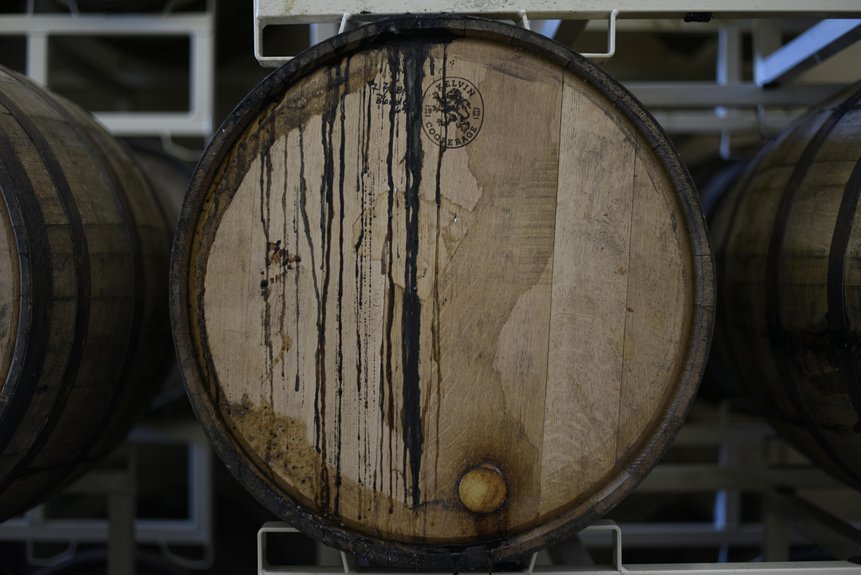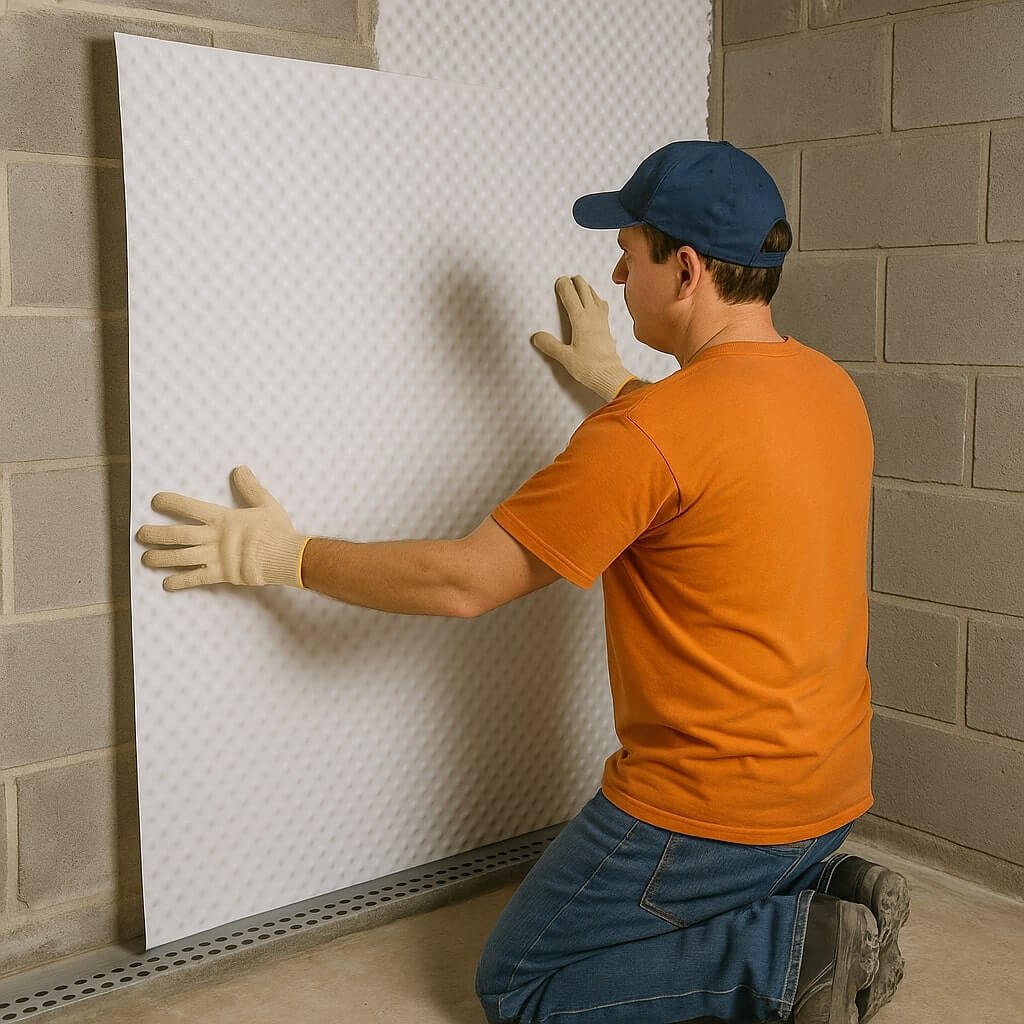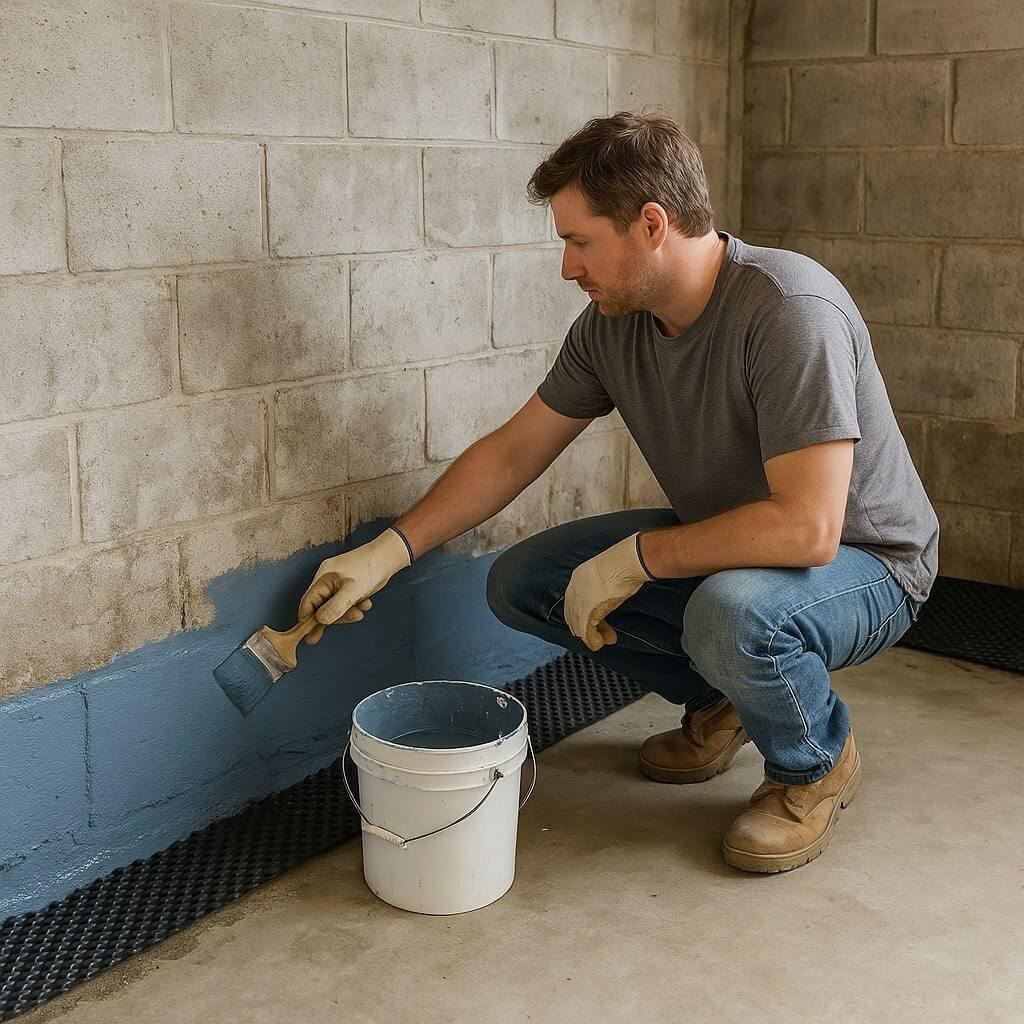When it comes to new construction basement waterproofing, understanding the critical measures to take can make all the difference. You’ll need to select high-quality materials and implement effective drainage solutions. It’s not just about preventing moisture; it’s about ensuring the longevity of your structure. Mistakes during this phase can lead to costly repairs down the line. So, what are the key practices you should focus on to achieve ideal protection?
Key Takeaways
- Ensure proper site preparation and grading to direct water away from the foundation, maintaining a slope of at least 2% away from the structure.
- Utilize high-quality waterproofing membranes on foundation walls to create an effective barrier against moisture penetration.
- Install exterior drainage systems, such as French drains and sump pumps, to manage water accumulation and prevent flooding.
- Apply effective sealing techniques around joints, cracks, and penetrations to minimize potential water leaks in the basement.
- Implement regular inspections and maintenance of all waterproofing systems to ensure long-term effectiveness and protection against moisture.
Understanding the Importance of Basement Waterproofing
When you consider the potential damage water can inflict on your home, understanding the importance of basement waterproofing becomes crucial. Effective waterproofing not only prevents structural damage but also enhances indoor air quality by managing moisture control.
By mitigating water intrusion, you reduce the risk of mold growth, which can harm your health and compromise your home’s integrity. The waterproofing benefits extend to increasing property value, as prospective buyers appreciate a well-maintained basement.
Investing in a reliable waterproofing system guarantees long-term protection, safeguards your belongings, and creates a safe living environment. Prioritize waterproofing to maintain your home’s durability and comfort.
Choosing the Right Waterproofing Materials

Selecting the right waterproofing materials is essential for ensuring the effectiveness of your basement waterproofing efforts. You’ll want to evaluate options like waterproofing membranes and drainage boards for ideal results. Here’s a quick overview to guide your choices:
| Material | Function | Best Use Case |
|---|---|---|
| Waterproofing Membranes | Creates a barrier against water | Vertical surfaces and foundations |
| Drainage Boards | Directs water away from the structure | Around foundation walls |
| Sealants | Fills cracks and joints | Areas with minor leaks |
| Sump Pumps | Removes accumulated water | Below-grade installations |
Site Preparation and Grading Techniques
Proper site preparation and grading are essential steps in effective basement waterproofing.
Begin with appropriate excavation methods to create a foundation that promotes water drainage away from your structure. Make sure that you remove any organic material and debris before proceeding.
Once the area is excavated, focus on soil compaction to stabilize the ground. Use a mechanical compactor to achieve ideal density, preventing future settling that could compromise your waterproofing system.
Grade the soil at a slope of at least 2% away from the foundation, directing water runoff effectively.
These techniques lay a solid groundwork for successful basement waterproofing.
Installing Exterior Drainage Systems
To effectively manage water around your foundation, understanding the various types of exterior drainage systems is essential.
You’ll want to focus on installation best practices to guarantee peak performance and longevity.
This section will guide you through selecting and installing the right system for your property.
Types of Drainage Systems
While planning your basement waterproofing strategy, understanding the various types of exterior drainage systems is essential for effective moisture management.
Here are four drainage types you should consider during drainage installation:
- French Drains: These gravel-filled trenches redirect water away from your foundation.
- Surface Drains: Designed to collect and channel rainwater away from the property.
- Channel Drains: Installed along driveways and patios to prevent water pooling.
- Sump Pumps: Actively remove water collected from drains, ensuring a dry basement.
Choosing the right drainage system is vital to protecting your home from moisture-related issues.
Installation Best Practices
Successful installation of exterior drainage systems requires careful planning and execution to guarantee long-term effectiveness.
Start by selecting appropriate installation techniques, such as trenching and sloping, to direct water away from the foundation. Confirm you use high-quality materials that align with your waterproofing methods, such as perforated pipe and gravel backfill.
Install a geotextile fabric to prevent sediment buildup, which can impede drainage. Regularly inspect and maintain these systems to confirm they function correctly.
Finally, adhere to local building codes and guidelines to achieve ideal performance and protect your structure from potential water damage.
Utilizing Interior Waterproofing Solutions

When addressing basement moisture, utilizing interior waterproofing solutions is essential.
You can implement interior drainage systems to effectively manage water accumulation and apply wall sealing techniques to prevent seepage through your foundation.
These methods work together to enhance your basement’s resilience against water damage.
Interior Drainage Systems
Interior drainage systems are essential for preventing water intrusion in basements, especially in areas prone to heavy rainfall or high groundwater levels.
Implementing effective interior drainage involves several key components:
- Interior Drainage Channels: Direct water to collection points.
- Sump Pumps: Actively remove collected water, ensuring dryness.
- Drain Tile Systems: Installed around the foundation to capture groundwater.
- Gravel Backfill: Facilitates drainage and prevents clogs.
Wall Sealing Techniques
To effectively prevent moisture from penetrating your basement walls, employing proper wall sealing techniques is crucial.
Start with evaluating your wall sealing materials, opting for high-quality waterproofing paint or sealants designed for masonry and concrete. Before application, make certain surfaces are clean and dry, removing any existing mold or debris.
Apply the chosen material using a brush or roller, covering all cracks and joints thoroughly. For ideal results, consider using a two-coat application method.
Additionally, inspect the sealed areas periodically to catch any potential failures early, making certain your basement remains dry and protected from moisture intrusion.
Sealing Cracks and Joints Properly
Sealing cracks and joints properly is essential for effective basement waterproofing, as even the smallest openings can allow water intrusion.
To guarantee the best results, follow these steps:
- Inspect all surfaces for visible cracks and joints.
- Use high-quality crack sealing materials designed for structural integrity.
- Apply joint reinforcement techniques, such as mesh tape or liquid membranes, to enhance durability.
- Conduct regular maintenance checks to identify new cracks or weaknesses.
Ensuring Proper Ventilation and Humidity Control
While you might focus on sealing cracks and joints, ensuring proper ventilation and humidity control is equally essential for maintaining a dry basement. Effective ventilation systems help circulate air, preventing moisture buildup. You should consider dehumidifiers to manage humidity levels, ideally keeping them below 60%.
| Ventilation Method | Benefits |
|---|---|
| Natural Ventilation | Cost-effective, passive air exchange |
| Mechanical Ventilation | Controlled airflow, consistent humidity levels |
| Dehumidifiers | Direct humidity control, mold prevention |
| Exhaust Fans | Reduces damp air, enhances air quality |
| Air Purifiers | Removes airborne pollutants, improves health |
Regular Maintenance and Inspections
Regular maintenance and inspections play an essential role in preventing basement moisture issues. By conducting routine checks, you can effectively monitor and address potential problems before they escalate.
Here are key practices to incorporate:
- Inspect drainage systems for blockages or deterioration.
- Check for cracks in walls or floors and seal them promptly.
- Monitor humidity levels using a hygrometer to guarantee they’re within a safe range.
- Examine sump pumps and backup systems for functionality.
These steps will enhance moisture monitoring, guaranteeing your basement remains dry and protected over time.
Prioritize these tasks to maintain a healthy environment.
Common Mistakes to Avoid During Construction
When constructing a basement, overlooking key details can lead to significant moisture problems down the line. Common oversights often stem from inadequate drainage systems, improper sealing of joints, and neglecting soil grading. These construction errors can result in costly repairs and compromised structural integrity.
| Common Oversights | Potential Consequences |
|---|---|
| Inadequate drainage systems | Water pooling and flooding |
| Poor joint sealing | Mold growth and decay |
| Incorrect soil grading | Hydrostatic pressure issues |
Conclusion
In conclusion, implementing effective basement waterproofing practices during new construction is essential for long-term protection against moisture damage. By selecting quality materials, ensuring proper site grading, and installing reliable drainage systems, you can greatly reduce the risk of water intrusion. Don’t forget to seal cracks and maintain ventilation to control humidity. Regular inspections of your waterproofing measures will help catch potential issues early, ensuring your basement remains dry and safe for years to come.




